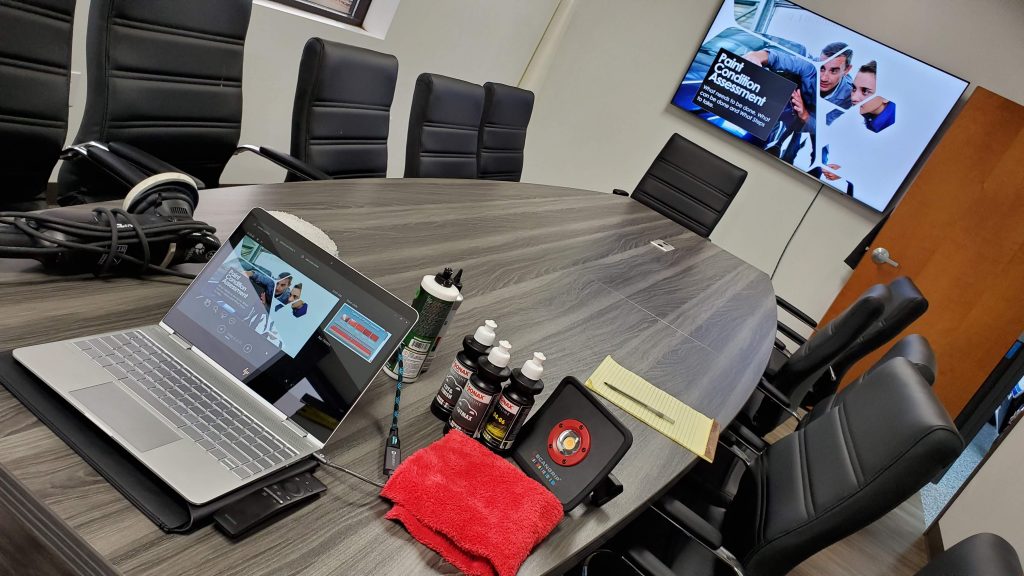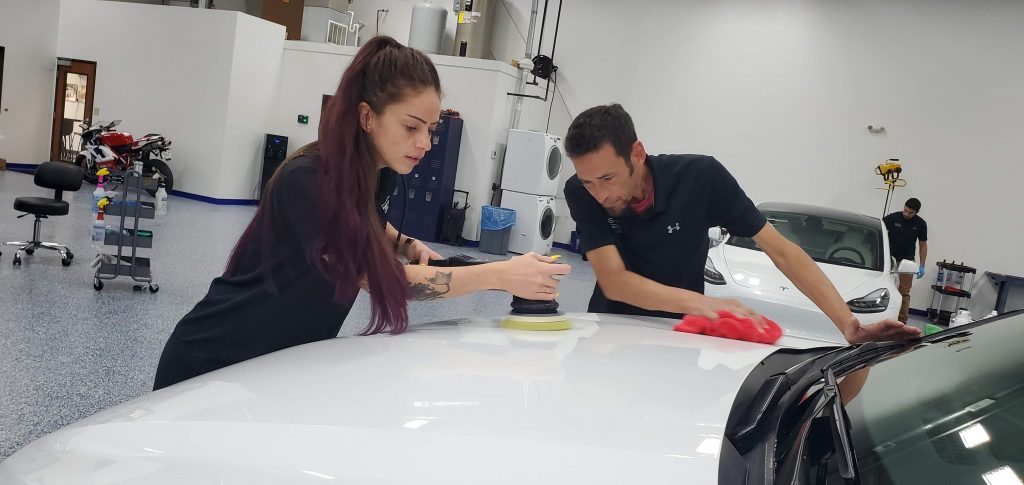On-The-Job Training Tips for the Professional Detailer
by Mike CardenasPrevious to my career in detailing, I worked for a company here in the Midwest as a general manager for more than 10 years. During that time, I had received some of the best training I’ve ever had towards helping me develop as both a leader and a manager. Attending numerous workshops and programs that along with a bachelor’s in business management, gave me a wealth of valuable knowledge and experience.
Today at my company Forza Detailing, I train my students with many of the skills I learned over the past 20 years. I am a huge believer of the old adage, “to teach, is to learn twice” and with that, I continue to hone my detailing skills while reinforcing the important basics. Professional Detailers know the importance of the basics and when it comes to training, basic training skills are no exception.
One of the most common basic training skills is performing on-the-job training. I want to share my process for on-the-job training or “OTJ” that I use during my training and consulting sessions at Forza Detailing.

Organization and Scheduling is key for training success
Not everyone is meant to be a trainer or teacher, this is a fact that many of us have experienced either through our own ability to train someone or having been trained poorly by someone else. Training is a skill that requires patience, listening skills, and tactfulness among other traits. In the professional detailing realm, training is highly important for both the beginner and the seasoned pro. Training can also be especially challenging for those shops that are extremely busy and need to train new employees.
On many occasions, I’ve seen this scenario play out and just to get someone started with mere basics seems to be a challenge for both the new employee and the shop. The shop wants the new employee to get running quickly on the shop floor and proceeds to train the new employee with the common “watch this” approach. Often not getting the results they had hoped from the new employee. This then causes tension and stress between the employee and the employer. The “watch this” is only one small part of the training process.
Before starting any type of training, make sure that you prepare and schedule a time to train. Not doing so will only set up the trainee for failure and make for a stressful day. It is also important for the trainer and trainee to prepare mentally to train. Here is my 6 step process for On-the-Job training that will hopefully help you during your next training session.
On the Job Training Process
Step 1: Explain to them How to Do it
In this initial step, explain to the trainee what they should be expecting to learn and how to do the task. As the trainer, it’s important to explain all of the important aspects of what is being taught. Why it’s important, what tools, products you will need, important information, etc.
Step 2: Show them How to Do it
Mentioned previously as the “watch me” step. This step needs to go beyond having someone just watch you. This step is a visual explanation of what you are trying to teach them and does require a play-by-play narration approach. Keep it simple! Stick to the basics and most important information of the task. Too much information will overwhelm them and can be discouraging.
Step 3: Check for Understanding
In this step, you are going to check that what was explained to them is understood. Ask them questions to check for understanding. For example, ask them “What speed did we say we’re going to use when doing a one-step?” Make them feel comfortable in asking questions and let them know that there are no stupid questions.
Step 4: Let them Try
This is the hands-on part of the process and does require the most patience by the trainer. Also, this is the most discouraging part for the trainee, so keep this in mind. Make them feel comfortable and be encouraging. Let them know that you are not going to let them “mess up” but are there to guide them and observe them during this step. During this step, it’s important to correct them but not critique their performance. Refer them to the information explained to them in Step 1 and what was shown in Step 2.
Step 5: Coach their Performance
Always begin letting them know what they did right. Reinforce the things they did that you really like about their performance. For example, “Your pad was flat on the surface the whole time, that’s great! Do that every time.” This is encouraging for them and immediately puts them at ease if they seem nervous. Give them positive feedback on what you liked and point out one thing for them to work on about their performance.
The goal here is to make them feel encouraged and not to drill them on every single thing they did wrong. For example, “Keep up the good work on that. The one thing I noticed was that there was too much pressure being used. Use medium pressure and try to keep the backing plate rotating smoothly.”
Step 6: Have Them Try Again.
It will often take a few attempts before they get the hang of what you are trying to teach. Repeating steps 4 and 5 until they feel comfortable doing it on their own. This is where many training scenarios go wrong because the trainee is made to feel to respond with “yeah, I go it” and only to be completely unsure of what they are doing. They then begin to develop bad techniques and habits quickly. Make sure THEY feel comfortable and confident, not the trainer.

Trainee learning new techniques
The goal is to ultimately get the trainee to do the task on their own. Once the trainee is on their own, keep in mind that it is always important to continue coaching their performance. Coaching is an on-going process for everyone, including veteran employees. Don’t assume they have learned what you have taught them and have it expertly down.

Pulling away to train someone is sometimes nearly impossible for a shop to properly train someone. This is often one of the reasons I often get brought in to train. Dedicated and focused training without distractions is an important part to successfully training someone. It also goes without saying but cellphones are a huge distraction and should not be allowed during training. Schedule small break times on longer training sessions for checking phones, bathroom, etc.
I also can’t emphasize how important it is to schedule time and mentally prepare to train. I’ve seen people try to train someone while trying to do other things around the shop, talk to customers, taking calls, etc. The focus needs to be 100% on the training at hand and the trainee if you want a successful training session.
Like all skills, it takes practice and patience to become proficient. I hope following these tips and 6 steps for On the Job Training help make your next training session a success.









Mike… I agree with all the points you made in this article. I was a firefighter for 33 years, 26 of them as a line officer, with the last 7 as a Deputy Chief. Part of my duties as a line officer and chief officer was to conduct training.
There are correlations to training firefighters and detailers… the “bread and butter” operations may stay the same, but there are always new things thrown into the mix. For firefighters, changes in building construction methods and materials that require a different approach to keep firefighters safe in the performance of their duties. In detailing, new detailing chemicals and equipment require training in their use, and changes in OEM paint finish thickness require detailers to change their approach to paint enhancement and correction.
Great article and outline!!
Great job Mike – I’ve had the pleasure to sit in on one of your training classes and you do an excellent job and provide tremendous value – Keep up the good work!!!
Although nice shot of beautiful hair on the woman, her hair be up out of a dangerous situation e.g wrapped up in a tool.